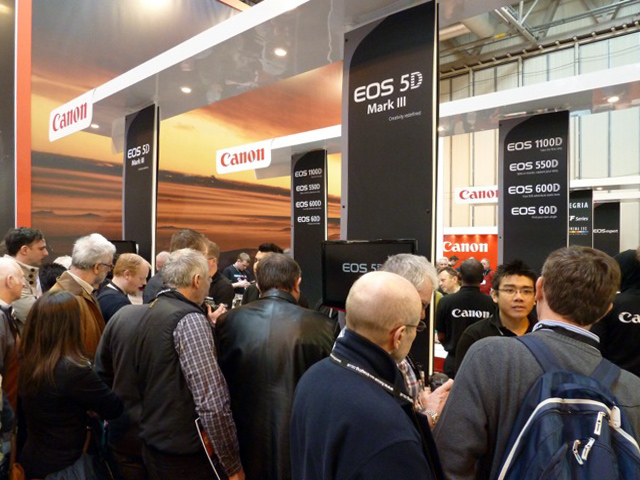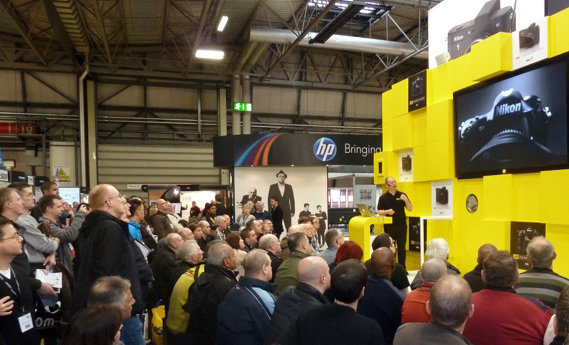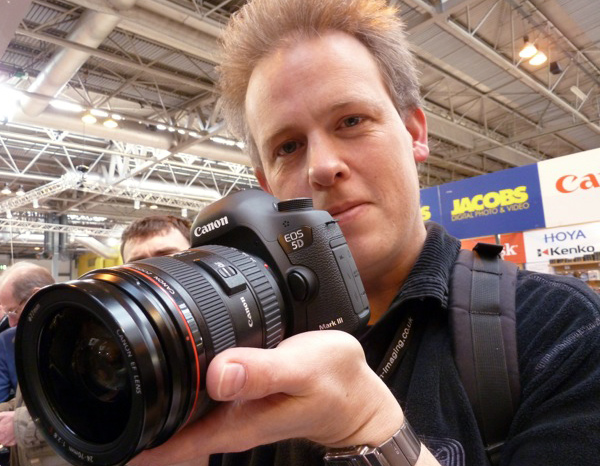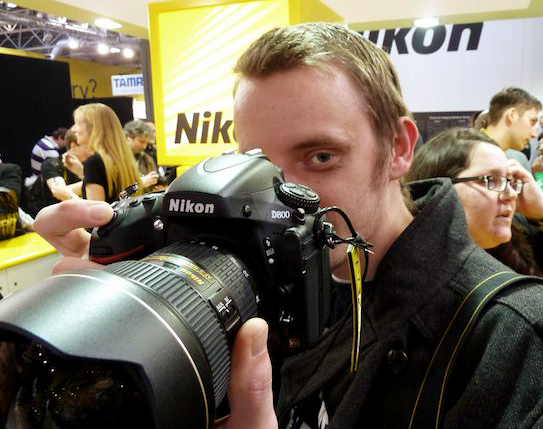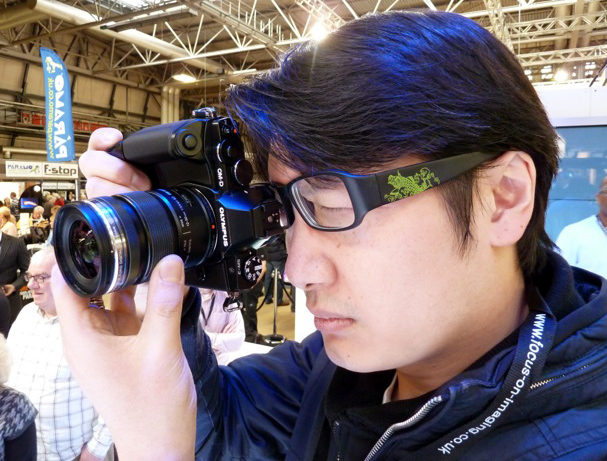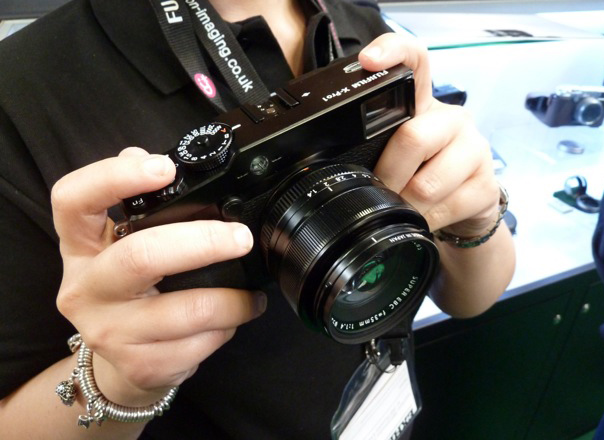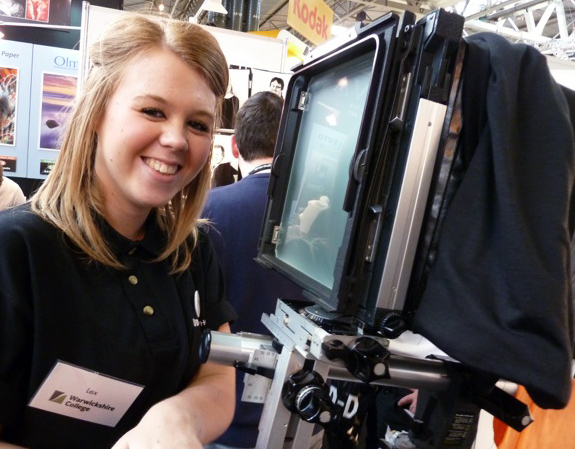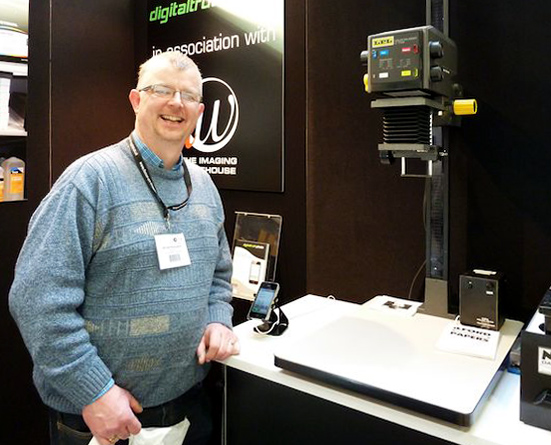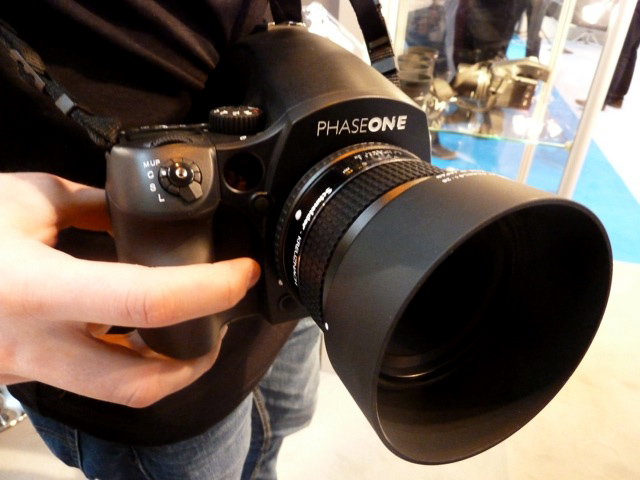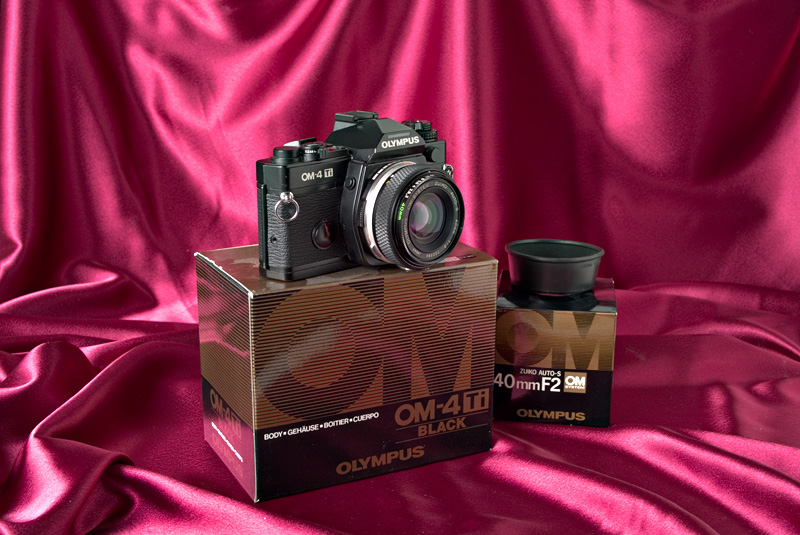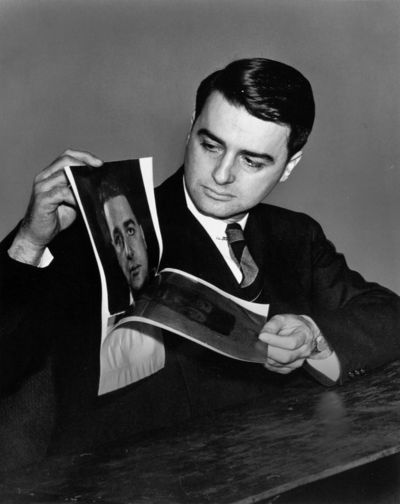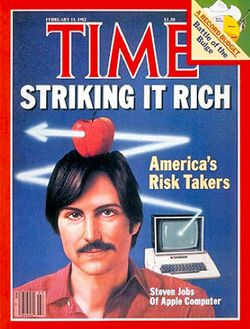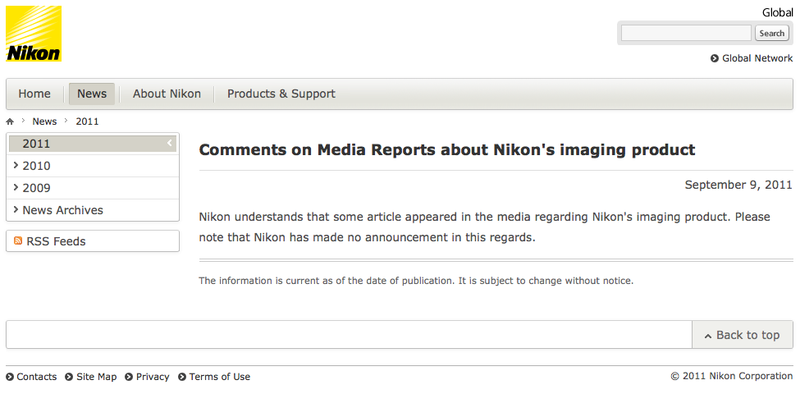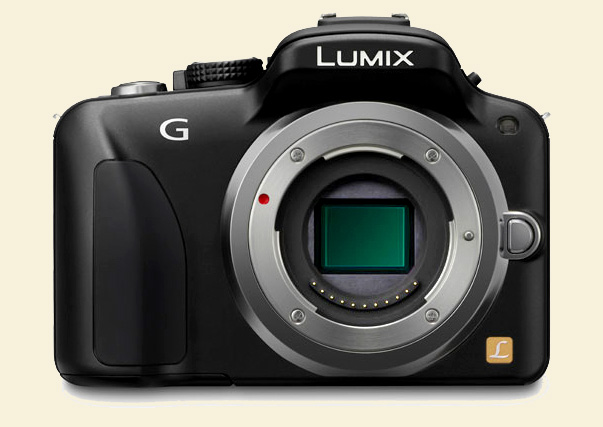 The Micro 4/3 sensor: small, yet big. Big, yet small.
The Micro 4/3 sensor: small, yet big. Big, yet small.
-
"Kahuna is a Hawaiian word, defined in the Pukui & Elbert (1986) as a 'Priest, sorcerer, magician, wizard, minister, expert in any profession.' [...] The term [was] commonplace in Beach Party films of the 1960s such as 'Beach Blanket Bingo,' where the 'Big Kahuna' was the best surfer on the beach." (Wikipedia)
The Nikon 1 certainly caused a stir yesterday. Most of it, unfortunately, negative. Thom Hogan of ByThom.com referred to the reaction variously as "anger, anger, anger," and an "uproar."
Me, I spent a fascinating couple of hours yesterday reading up on the IBM PCjr, the Edsel, and Kodak's Photo CD.
Did you know, for instance, that IBM spent $40 million just on pre-launch advertising for the PCjr, and never made it up over the life of the product? And did you know that Edsel was not just a car, but was supposed to be an entire Ford division, like Buick was at GM? It's just too bad that it was also the ultimate ignominy for Edsel Ford, who despite being a really good guy seemed to get the shaft at every turn—he even died before his time (of stomach cancer, at 49). As for Photo CD, I could tell you stories. For many years, Kodak was just so big that it assumed it could create the very markets it expected to supply. It tried that trick over and over—early on with success; later, not so much. For those whose memory may be hazy, I'll just note that, once upon a time, Kodak's concept of the future was that everyone was going to be looking at their pictures on their TV sets, using purpose-specific components that looked like stereo music CD players (because they basically were). Kodak expected to sell 250,000 of these a year. When the dust finally settled on the interminable closeouts six or eight years later, sales were something like a tenth of that. Not for one year; for the entire life of the product.
People, Americans especially, seem to give enormous weight and respect to bigness. IBM was the big dog in computers in the early '80s, with 70% of the mainframe market locked up. It was assumed that IBM could do no wrong and would win every battle. By the way, did I tell you that my shuttle driver to the airport when I went to Maine used to be an IT guy? For mainframes. He never worried about PCs because he figured the PC would never catch on and the mainframe would never go away. He said he had to go back to school to learn how to drive a truck.
But I digress.
Anyway, another thing I learned yesterday was that IBM actually timed its pre-launch announcements and advertising specifically to interfere with competitors' sales. It worked. People held off buying the PCjr's competitors because they expected big-dog IBM to automatically prevail.
It's not how big a stick you have, it's how hard you swing it
Similarly, lots of photographers have taken a wait-and-see attitude towards mirrorless because the biggies (Canikon, who together control, oh, something like 117% of the camera market) hadn't signed on yet. Surely when Canon and Nikon came into mirrorless they would blow the little guys away with their...their...bigness.
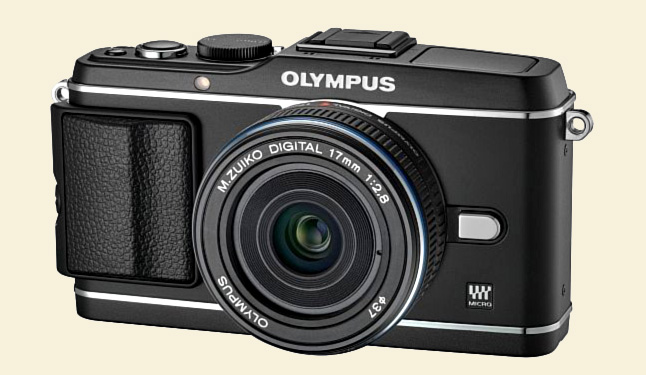 Just like in the '70s in the U.S. auto market when imports were growing like crazy. All sorts of people were just waiting for things to get serious. For Detroit to enter the fray. What they turned out to be waiting for were the Pinto and the Vega.
Just like in the '70s in the U.S. auto market when imports were growing like crazy. All sorts of people were just waiting for things to get serious. For Detroit to enter the fray. What they turned out to be waiting for were the Pinto and the Vega.
Turned out Detroit didn't take small cars seriously.
The outrage and anger anger anger in our little corner of the photographic firmament is not so much over Nikon's mirrorless offering as that—in our terms, this would be—we found out yesterday that Nikon isn't taking mirrorless seriously. I cannot speak for the pink-camera-wielding Asian female "what does 'megapixel' mean anyway?" crowd. All I can talk about are all the photo-dawgs who expected the arriving half of the Canikon juggernaut to blitz the weak, wimpling little Oly-Panaleica snivelers with its glorious big Nikon Kahunishness. We expected a photographer's tool that would take on Micro 4/3 and NEX on their own terms, head-to-head, and smash into them rugby-style. Instead, Nikon created a targeted consumer product aimed at people not serious enough about photography to own a D5100. That has spray-and-pray built in. That is interesting mainly because it has some of what we hope will be trickle-up deep technology.
(Canon, for its part, must be a little like a guy who has been following another guy across a minefield—right after the first guy got blown up. Hmm, what's the next step now?)
The apparent market leader really is leading the market
My suspicion is that what yesterday really proves is that Micro 4/3 really is the real deal, the sweet spot, the best option—the real Kahuna.
APS-C sensors work fine in fixed-lens mirrorless cameras, such as the Leica X1* and the Fujifilm X100. And while NEX is making its own splash and winning its own adherents, many have pointed out that the over-large sensor is distorting the size of the lenses, preventing them from being miniaturized in proportion to the cameras. On the other hand, Micro 4/3 really does seem to have it right: the sensor is big enough, but not too big; small enough, but not too small. The cameras are right-sized, the lenses are right-sized. Everything's in balance. Everything fits.
Not only that, but there are choices everywhere. Choices, which buyers like to have. Choices not just of bodies (how many are there now?) but of body styles. And having two-slash-three companies (Olympus, Panasonic, and Leica-branded Panasonic) making the same system is reaping obvious rewards in one very important area: lenses. The latest sweet little morsel is due to ship this very month: the tasty Leica DG Summilux 25mm ƒ/1.4 ASPH.
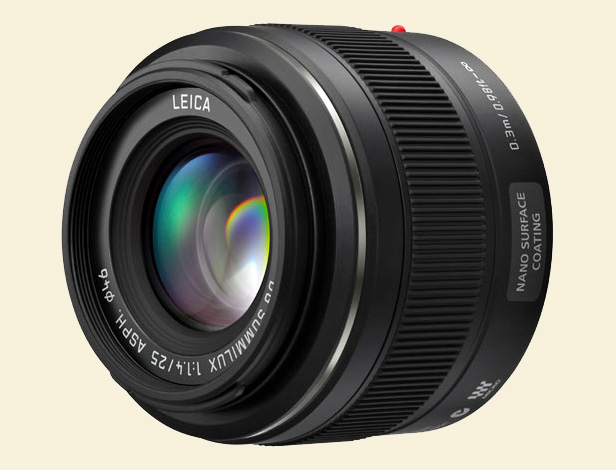 I'll just wait here while you go look up that 18.5mm ƒ/1.4 for the Nikon 1. Dump-de-dum.
I'll just wait here while you go look up that 18.5mm ƒ/1.4 for the Nikon 1. Dump-de-dum.
Take a look at this page—looking like a system, isn't it gang? A pretty generous one. You can get a fisheye. And a superfast premium ultrawide. And a choice of eight standard zooms (although I don't quite grok why they're all different, but then I'm zoom-impaired). And a 3D lens. And not one but a choice of three pancakes.
Let's take bets on on how long you'll have to wait for this many lenses for the NEX or the Nikon 1. (And don't give me that adaptor crap—not that Micro 4/3 doesn't have plenty of those. I mean fully functioning auto-coupled lenses designed for the system.) Even if Micro 4/3 stands still, which it won't, you're still talking years for Sony and Nikon to fill all their lineup holes.
Canon kingdom come
Acolytes of bigness will not be swayed, I'm sure. They'll just say, serenely, sure, but wait till Canon comes. Just you wait.
Wait.
Thing is, I'm not sure we have to do any more waiting. Yesterday seemed like a milestone to me. It was a couple of Nikons that arrived, I know that. But somehow it seemed like what really arrived was Micro 4/3.
Mike
*Which doesn't seem to be getting much mindshare these days, or is that just in my little backwater Parish?
Send this post to a friend
Please help support TOP by patronizing our sponsors B&H Photo and Amazon
Note: Links in this post may be to our affiliates; sales through affiliate links may benefit this site. More...
Original contents copyright 2011 by Michael C. Johnston and/or the bylined author. All Rights Reserved.
Featured Comment by Joseph: "Does my having purchased the DMC-GF1 just two months after its arrival offset the 1972 Pinto I bought new at age 19?
Featured Comment by Robert Roaldi: "And I'm still shooting non-Micro 4/3 Olympus DSLRs. Man, do I feel old or what.
Featured Comment by Ivan: "Americans like bigness, yet we hate carrying big cameras. I suspect it's because there's little prestige in it, unlike showing up in a new black 'Slade. As for Canon mirrorless, the mystery is over—it will be, point for point, like Nikon's. In the same colors, too, I predict. Long live Micro 4/3."
Featured Comment by Malcolm S: "I'm not sure that you quite 'get it.' Whether the Nikon 1 succeeds or not, it heralds the beginning of a new paradigm in still photography. No longer will photographers able to afford only a cheaper camera have to compose a single scenario for the 'perfect' picture. They will extract that picture from within a rapidly taken sequence. For that you need fast autofocus and processing speed, with the Nikon 1 claimed to have those in spades (faster even than the D3s). The size of the sensor and number of pixels are largely irrelevant with reasonable lighting and print sizes to 11x17. The age of the slow plodding dinosaur may be coming to a close, with faster and more agile species overtaking it in the evolutionary race."
Featured Comment by Mark Crabtree: "I thought that Micro 4/3 was the big winner yesterday. That sensor seems bigger than it did two days ago, doesn't it?
"The Nikon is cute and does some interesting and amazing (and sometimes annoying) things. I can see it thriving as a fun and fashionable amateur camera, but it is hard to imagine that the current price structure isn't going to be a problem in that market.
"I keep obsessively reading camera reviews and always end up back at the Panasonic G3 (or GH2). Nevertheless, I'm happy enough with the Sony Alpha 100 that I've ended up with sort of by accident (a throw-in on a camera trade). For now I can make the pictures I want to with the gear I have, and just sit back and watch the parade of amazing new cameras."
Featured Comment by Johan: "The guy in the minefield following the other guy would at least know to follow him to the exact spot where he exploded. Whereto from there, however, is the big question.
"There are still a few things that need to click for me with regards to Micro 4/3, but it is pretty much getting there. I just need to find a body that is affordable and fast enough and it would, along with that Panasonic 20/1.7 pancake, probably never leave my hands.
"But I don't need one now, so I can wait and see if Canon will make a move. Mostly because I might want to be able to use the EF glass and flash I already own on a mirrorless as well."
Featured Comment by Don Craig: "The bottom of the market is a dangerous place to be, as mobile phones are just about to pass eight megapixels. Phones include lots of funky apps for canned post-processing of snaps of me and my friends, and everyone carries one all the time. Pretty soon, the only market for camera cameras will be for those serious photographers Nikon has just ignored."
Featured Comment by Craig: "While Kodak's Photo CD may have been a market failure, it was a great solution for many of us involved in color print publication back in the day."
Featured Comment by Will Frostmill: "Can I get an A-men?"
Featured Comment by John Krumm: "I think there's truth to what you say, Mike, and if you add in the third party lenses coming even more so (Sigma is rumored to be working on Micro 4/3 lenses). But give the new systems a few years to catch up on their own terms. Nikon displayed a slew of mock-up lenses it plans to release. And the phase/cdaf combo AF sounds like a breakthrough, and might be easily used on a DX version of this camera. What if the D400 or later D500 looks somewhat like an upsized version of the V1? That might be interesting."
Featured Comment by Michael: "Impeccably logical conclusion...but I'm buying a NEX 7 anyway. :)"
Featured Comment by Nick: "A look at the specs on the NEX 7 makes me want to abandon my bag of Micro 4/3 gear and buy one; a look at the NEX lens options makes me want to cuddle my bag of Micro 4/3 gear to my chest like it was an an adorable little puppy.
"At this point, I'm not sure what Canon could introduce that would woo people away from what's already out there. The APS mirrorless field is badly overcrowded (and Canon might not want to risk its Rebel sales); Micro 4/3 would be hard to dislodge from its perch on the half-sized sensor market; and Nikon has beaten them to the market in the last remaining sensible size category for system cameras. Maybe if Canon had a six-lens system (bright primes and dim zooms in each of wide, normal, and tele) ready to ship on release day?"
Featured Comment by Pavel Urusov: "I think you should pay some attention to Samsung. Their lens line-up is very promising, their roadmap even more so. And they have pancakes, too! Tweny millimeter and 30mm NX pancakes are very good, and the upcoming 16mm pancake also looks attractive. In my opinion, Samsung NX system shows that APS-C lenses can be made sufficiently small."
Featured Comment by Steve Jacob: "Actually, everyone has it backwards—the real problem with MFT is that it is basically a high end netbook for people that actually want a laptop, but are happy to lose performance because its a bit lighter and smaller. The N1 is more like an iPad - a computer for people that dont pretend they want to WORK on the darn thing, they just want to surf and play and read newspapers. An iPad does not replace a laptop - its for people that never actually wanted or needed a laptop in the first place, they just wanted to do some of the fun things a laptop did without all the hassle of learning to use one. Nikon 1 is the camera Apple would make, (though theirs would look nicer). Nice pictures without that pesky manual."
Mike replies: I was following your argument up until that last sentence. That still kinda remains to be seen, no?
Featured Comment by Geoff Wittig: "Mike is definitely on to something with the Nikon-as-Kodak analogy. Big and successful companies notoriously tend to ossify and become fatally conservative in their thinking. The path to managerial advancement becomes ever more conformist when the profits keep rolling in. Here in the Rochester N.Y. area it's been agonizing to witness the slow motion suicide of the company once known as "the Great Yellow Father." Their latest act of desperation: selling off their priceless collection of patents for pennies on the dollar, just to stave off bankruptcy for another year or two. The vultures are circling.
"Kodak's Photo CD was certainly a disappointment to the company. However, I believe the fatal wound was inflicted by their huge investment in the launch of a brand new film format (APS) at the worst possible moment in history. Kodak sank literally billions into the new system, bleeding them dry of development funds just as the digital tsunami began to rise."
Featured Comment by Sergio Muscat: "I am a Nikon guy and was very curious about the new mirrorless system (I also have an EPL2 which I love, meaning there was no waiting for me, because I knew that anyway it would take at least a year or two for a new format to settle, and I knew Nikon would want to do it 'their way'). Anyway, my point is that at face value, the new format is disappointing. However, what is interesting is the fantastic technology which is under the hood. What Nikon have done is used the 1 series to create a new, solid basis for their new DSLR lineup, which I am pretty sure remains their primary focus. Now I am really curious to see the new DSLR upgrades."
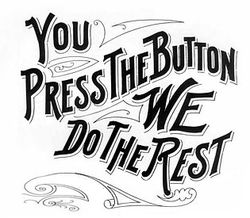 I do think it was an act of desperation, and I am not remotely convinced that Kodak has either the resources or the managerial smarts to get themselves out of the rather deep hole they find themselves in. Foolish, though? I think Kodak identified one of the few industry segments where they have a realistic chance of making real money. At least over the rest of this decade. (Beyond that, who knows? The digital revolution is still far too much a work in progress for us to have any idea what the long-term looks like.)
I do think it was an act of desperation, and I am not remotely convinced that Kodak has either the resources or the managerial smarts to get themselves out of the rather deep hole they find themselves in. Foolish, though? I think Kodak identified one of the few industry segments where they have a realistic chance of making real money. At least over the rest of this decade. (Beyond that, who knows? The digital revolution is still far too much a work in progress for us to have any idea what the long-term looks like.)